AP Bio Unit 6
1/34
There's no tags or description
Looks like no tags are added yet.
Name | Mastery | Learn | Test | Matching | Spaced |
|---|
No study sessions yet.
35 Terms
What does DNA and RNA stand for? what do they each look like? (one key difference in appearance)
1. Deoxyribonucleic acid: double stranded
2. Ribonucleic acid: single stranded
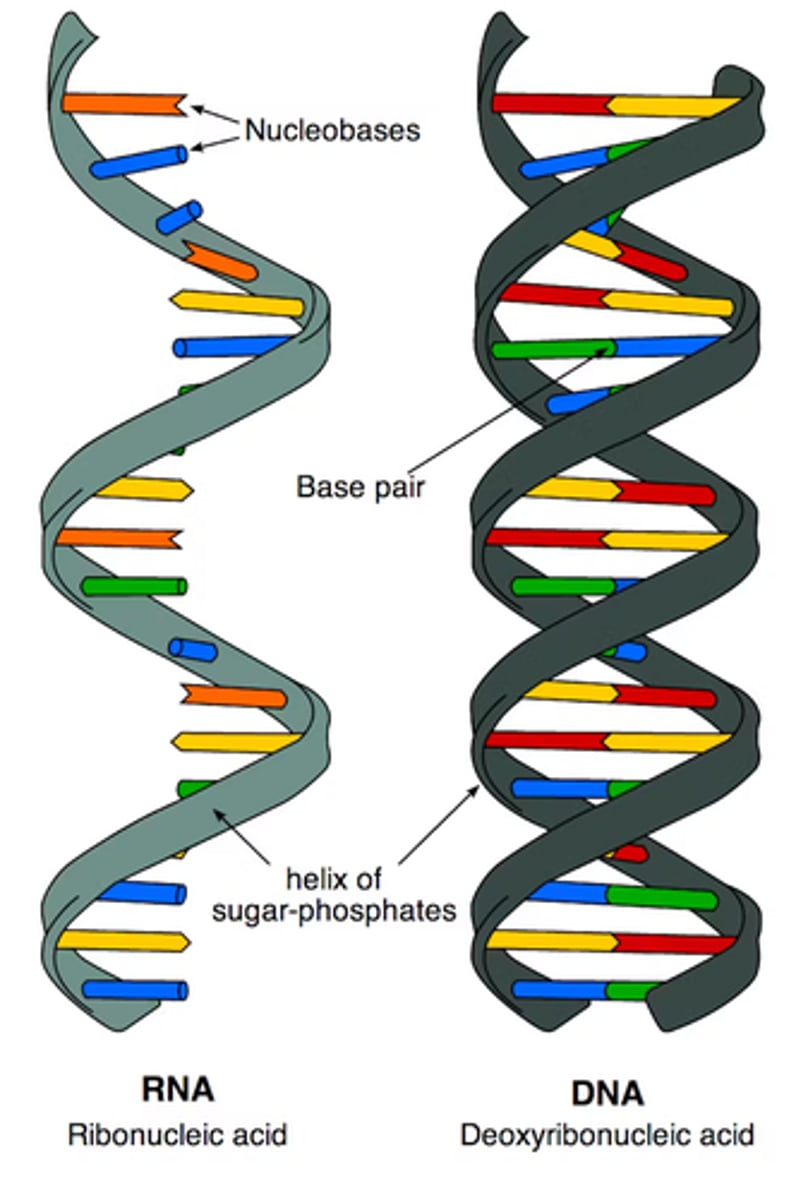
What are the DNA and RNA bases? which others do they pair with?
DNA:
Adenine -> thymine (two bonds)
Guanine -> cytosine (three bonds)
RNA:
Adenine -> Uracil (two bonds)
Guanine -> Cytosine (three bonds)
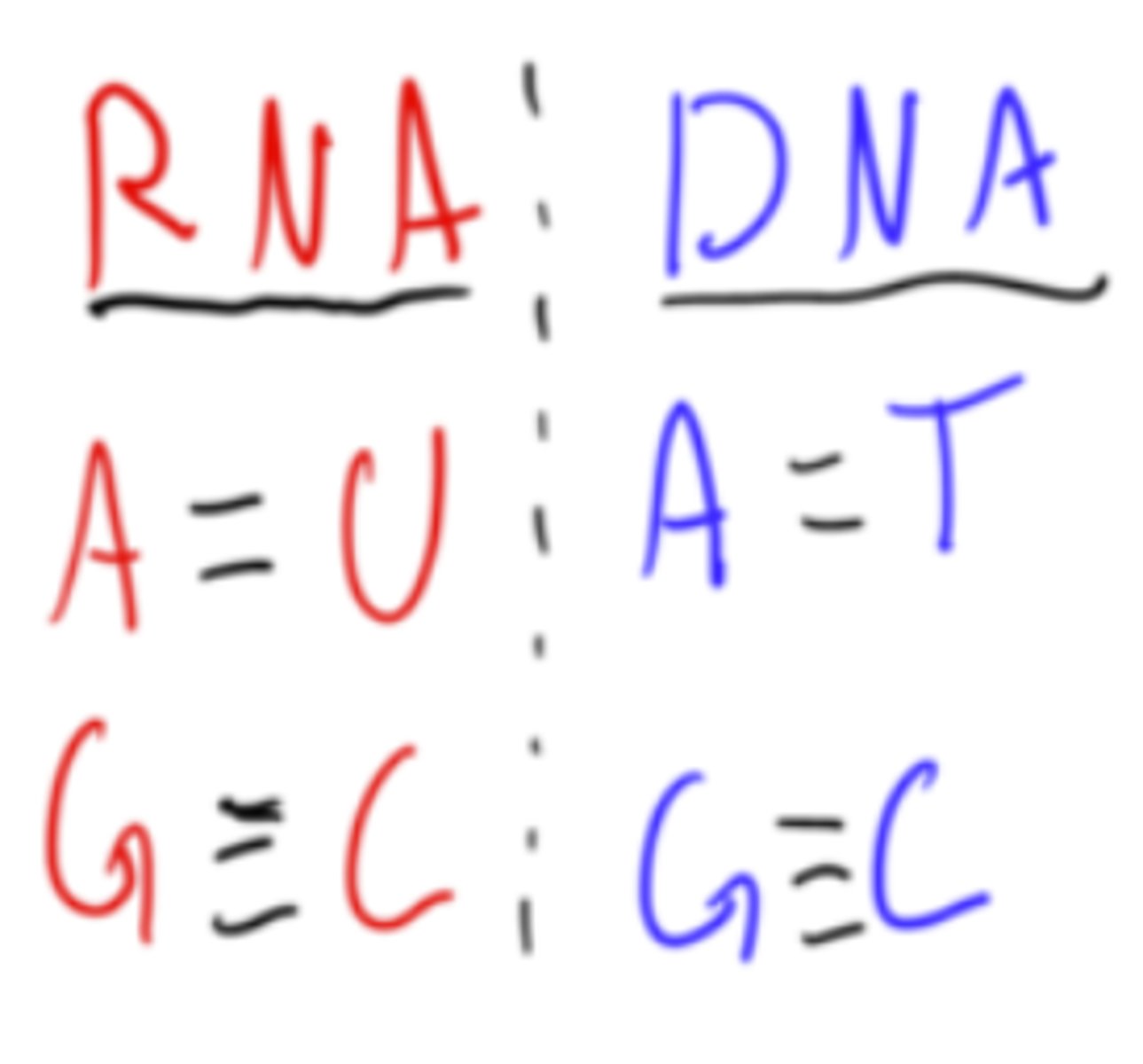
What are the three parts of a nucleotide (monomer of nucleic acid)?
1. Phosphate
2. Nitrogenous base
3. 5 carbon sugar
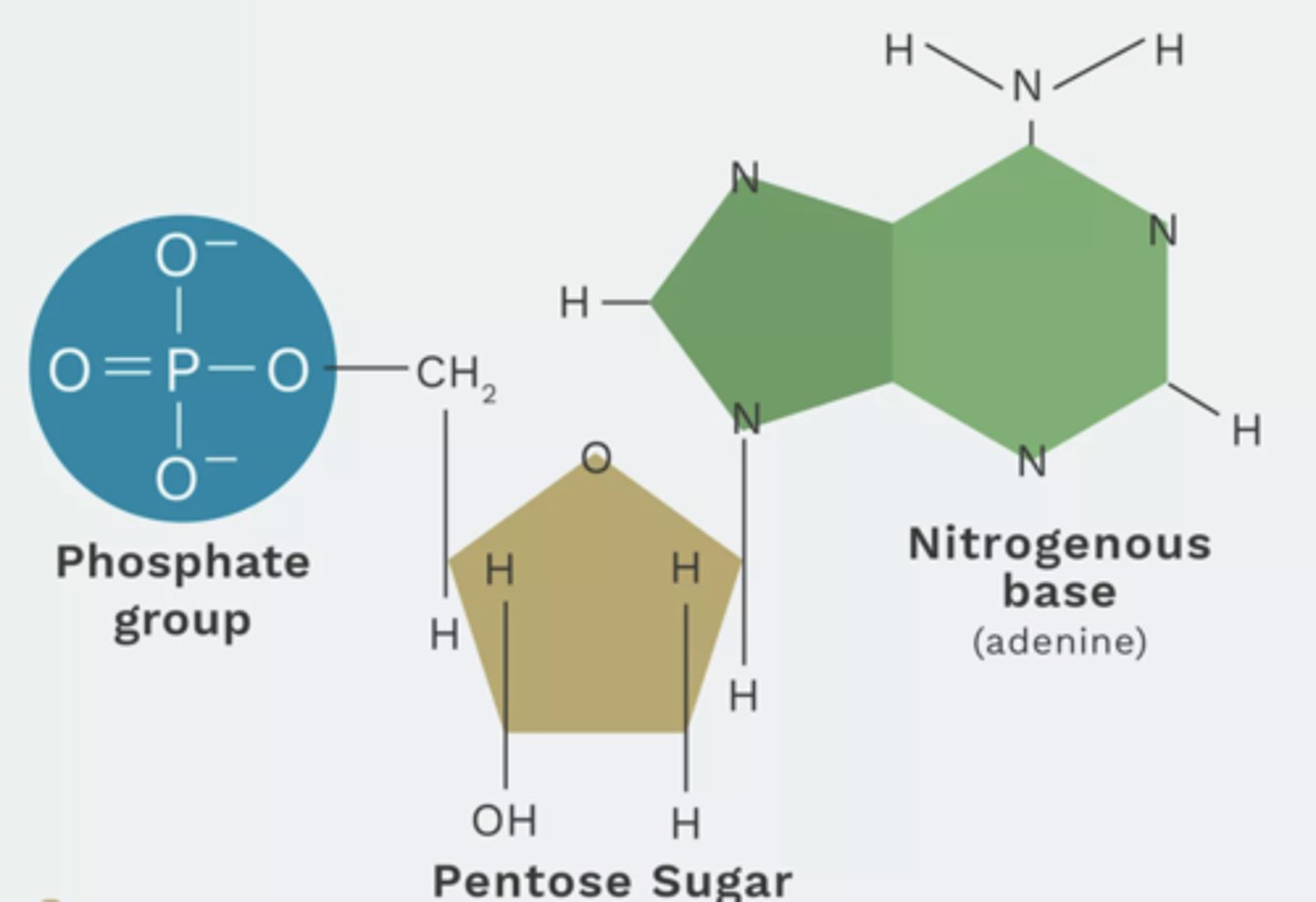
What are the two types of nucleotides?
1. Purines: Adenine and Guanine
2. Pyrimidines: Thymine, Cytosine, and Uracil
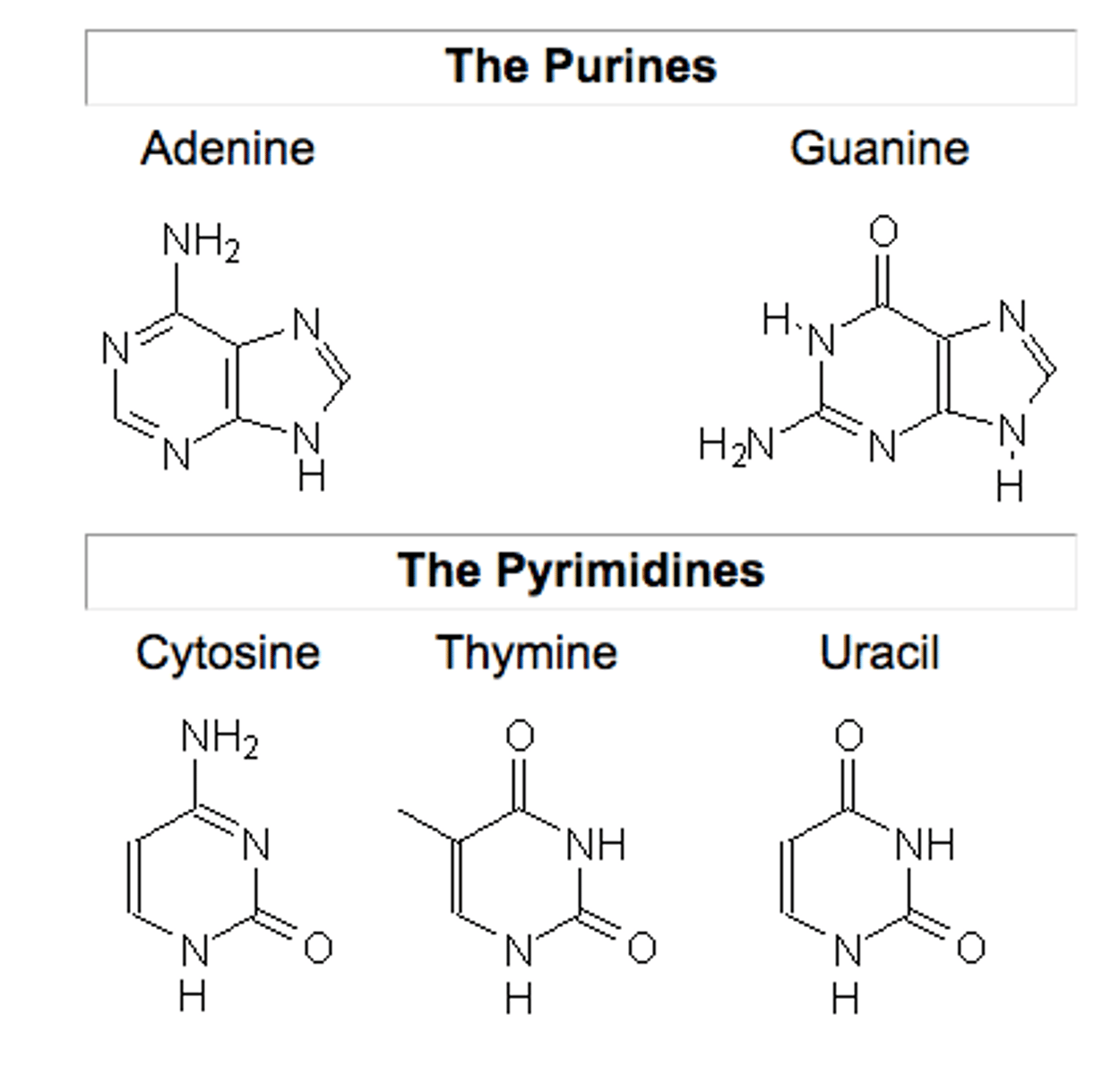
What is DNA like in prokaryotes vs. eukaryotes?
1. Prokaryotes: DNA is circular, one end connects to the other
2. Eukaryotes: DNA is linear
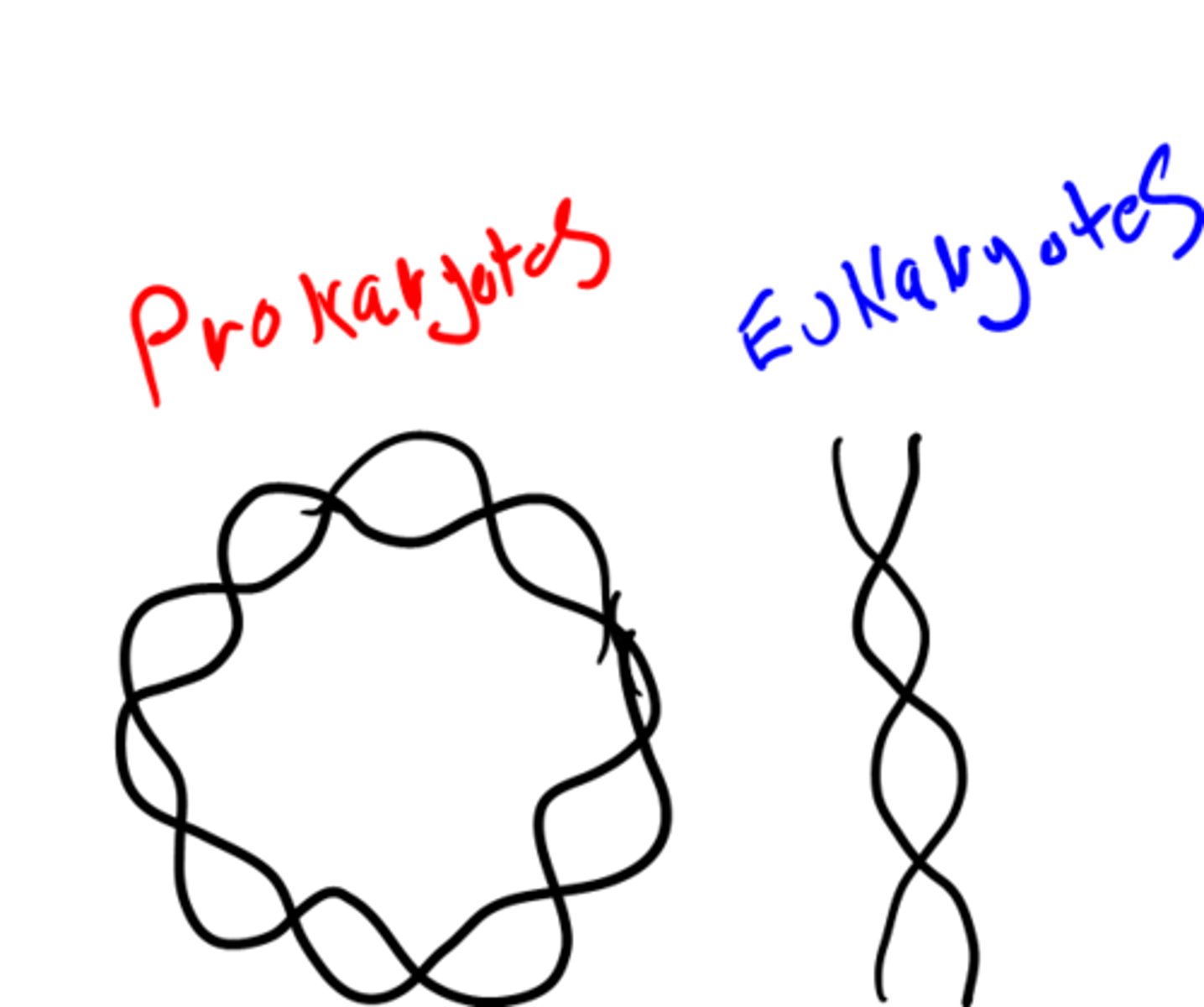
What happens during S phase of mitosis
DNA replication
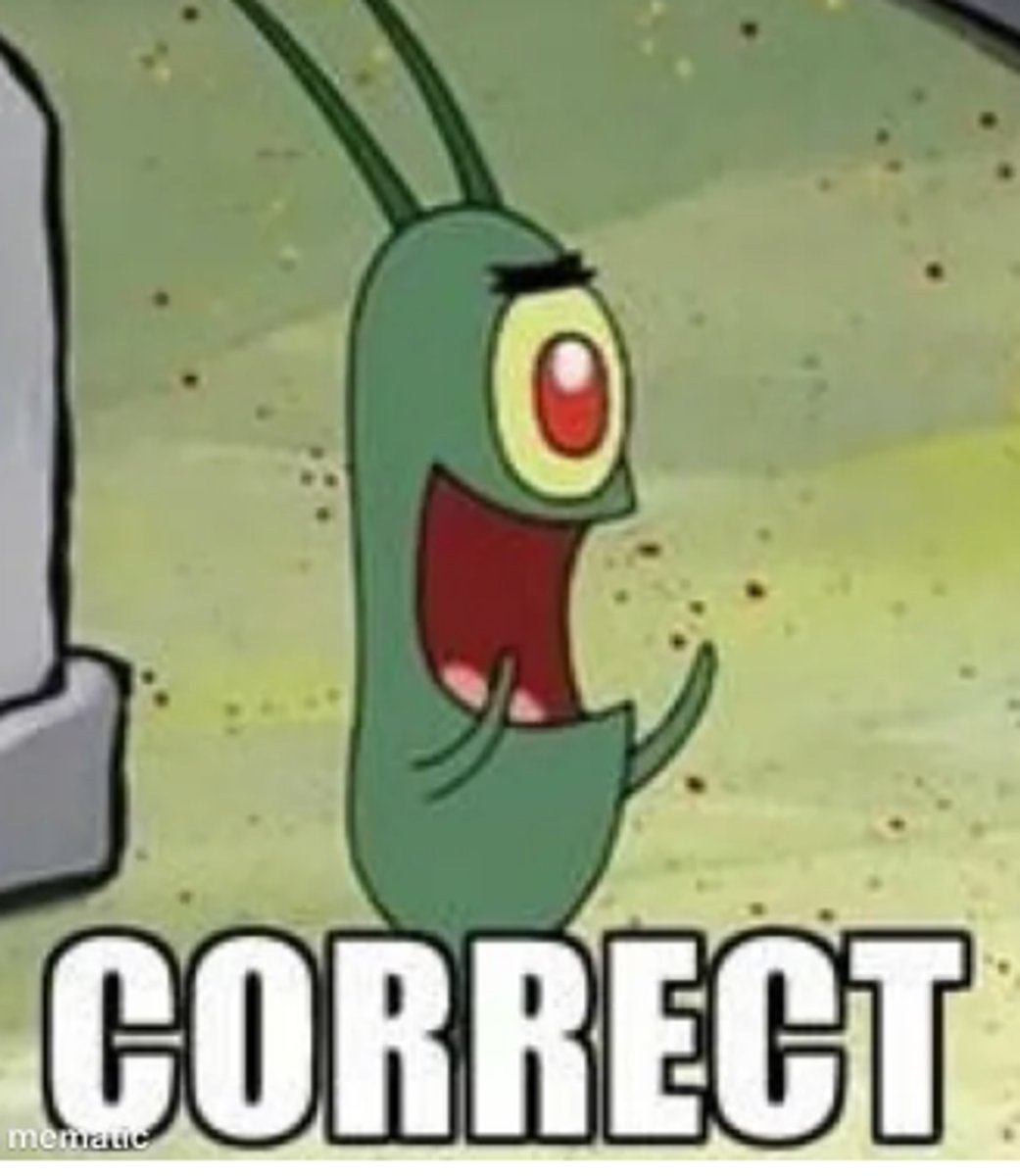
In what direction is DNA synthesized?
5' to 3' direction
one end of a DNA strand is 3' and one is 5'
each strand runs the opposite direction of the other (antiparallel)
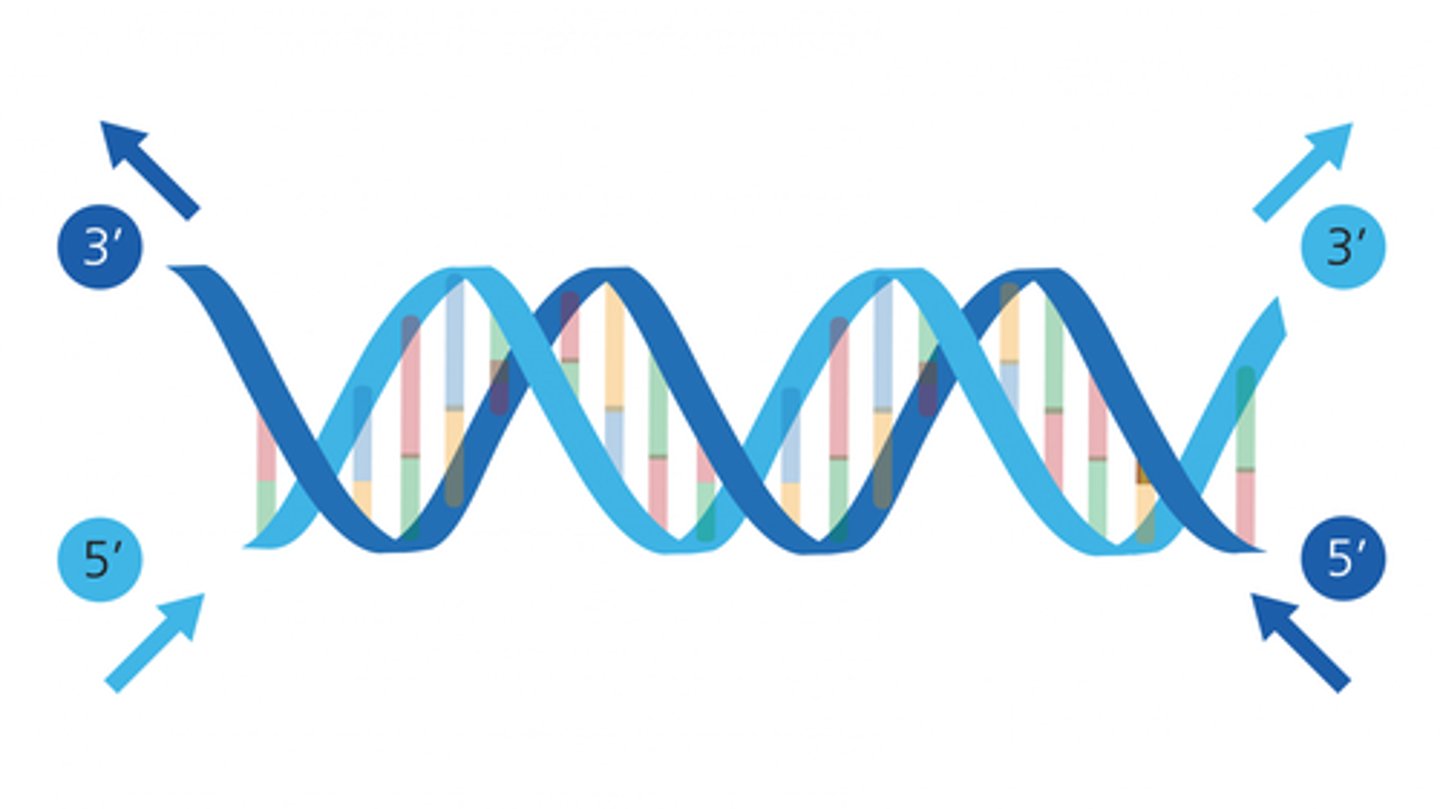
DNA replication video >>>
https://youtu.be/TNKWgcFPHqw?si=wskmE9vJi5bGEMS6
or search "DNA replication 3d"
What is the first step in DNA replication?
Helicase unwinds the DNA
Topoisomerase (not in image) relaxes the supercoiling that occurs from the DNA unwinding

What is the second step in DNA replication
Primase makes a small piece of RNA called an RNA primer on the unwound strand of DNA
This is important for the next step to begin because it marks the starting point for the synthesis of the new strand
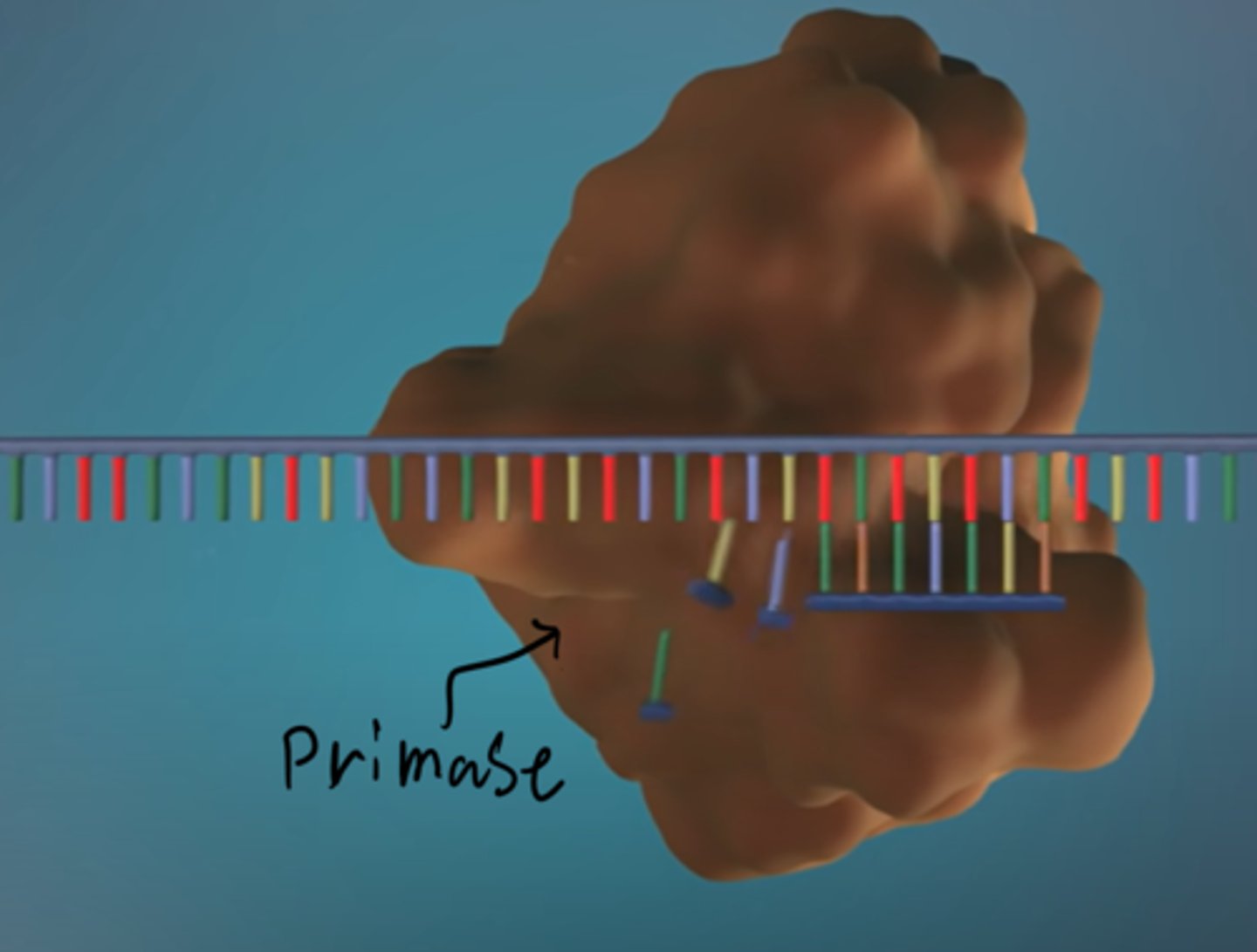
What is the third step of DNA replication?
DNA polymerase binds to the primer, then places DNA bases in the 5' to 3' direction.
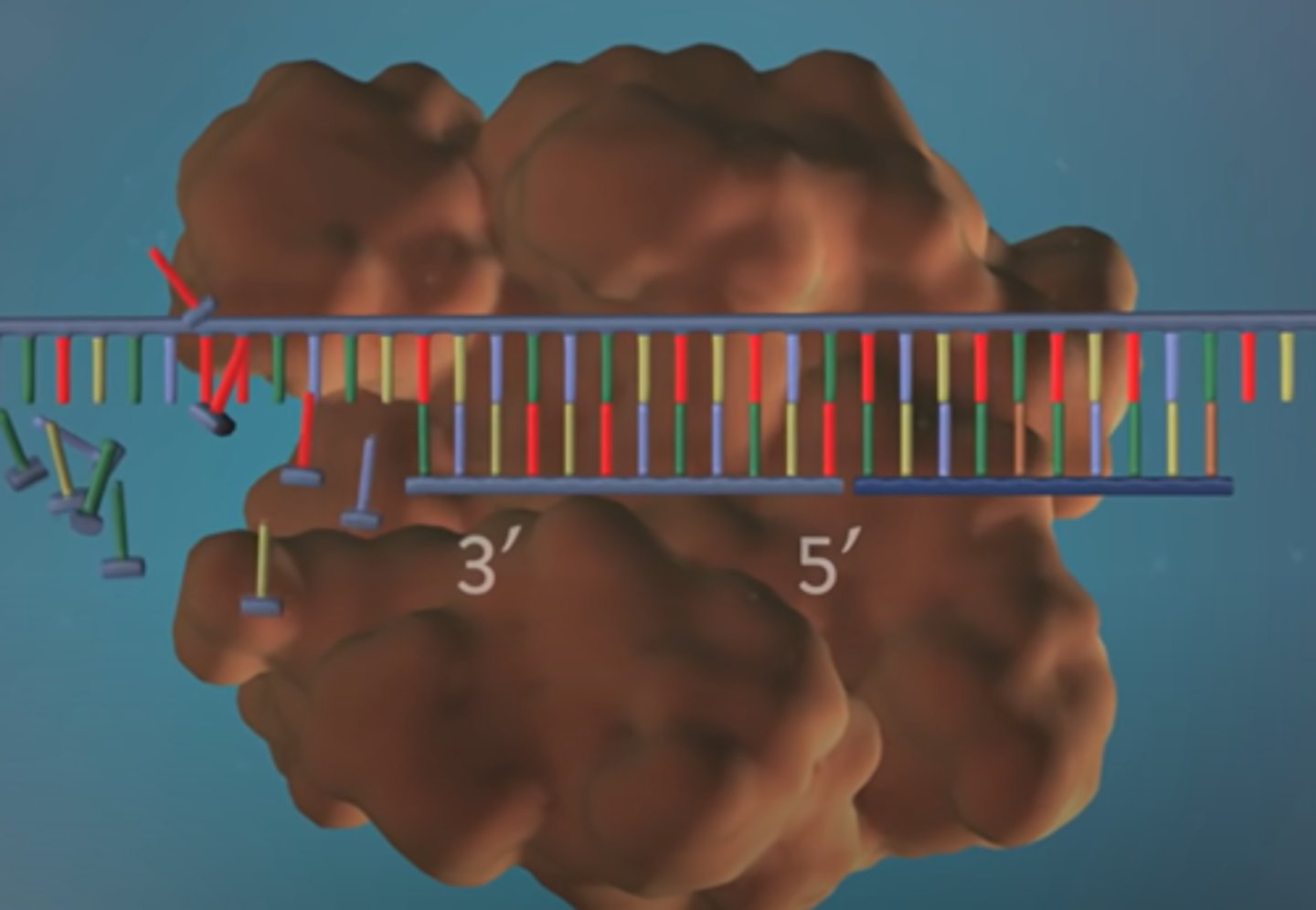
Describe the leading strand in DNA replication
This strand is synthesized continuously because it starts with the 5' end, so DNA polymerase can continuously add bases in the 5' to 3' direction. Only one primer is needed for the leading strand.
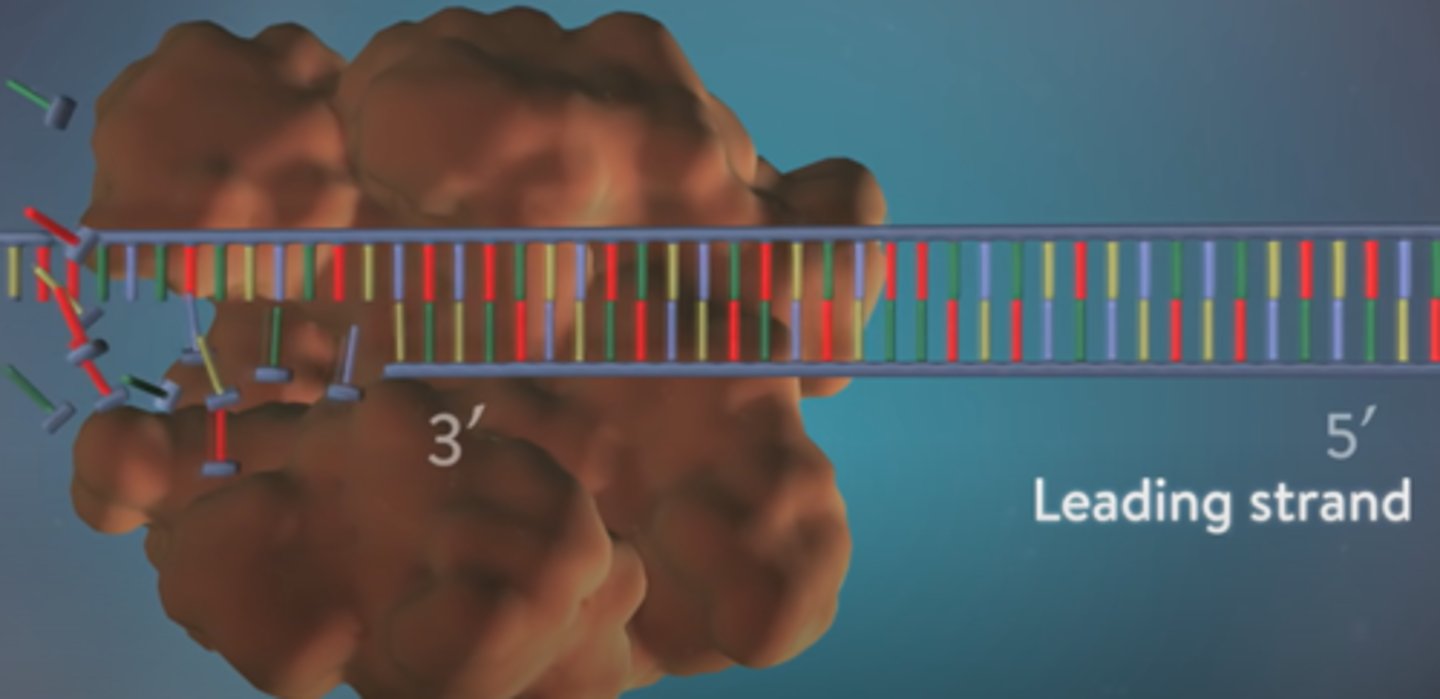
Describe the lagging strand in DNA replication
1. This strand is made in a series of fragments because it starts at the 3' end, so DNA polymerase has to keep going back and starting in a new spot to build in the 5' to 3' direction.
2. A new primer has to be made every time DNA polymerase finishes a strand, so a bunch of primers are made on the lagging strand
3. The fragments are called Okazaki Fragments
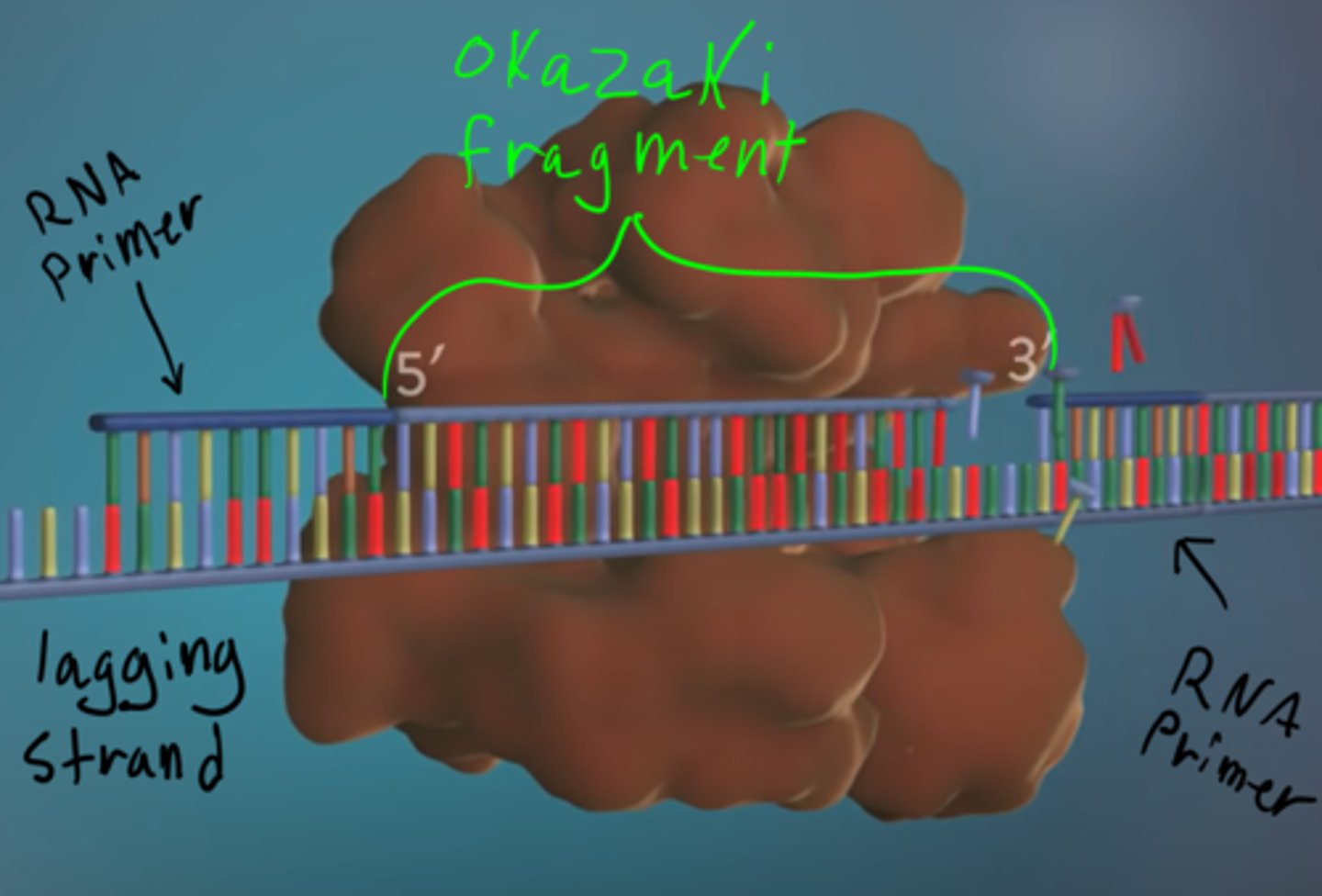
What is the fourth step of DNA replication?
1. Exonuclease removes all the RNA primers from both strands (1 on leading, a ton on lagging)
2. Another DNA polymerase comes back and fills the gaps where the primers where
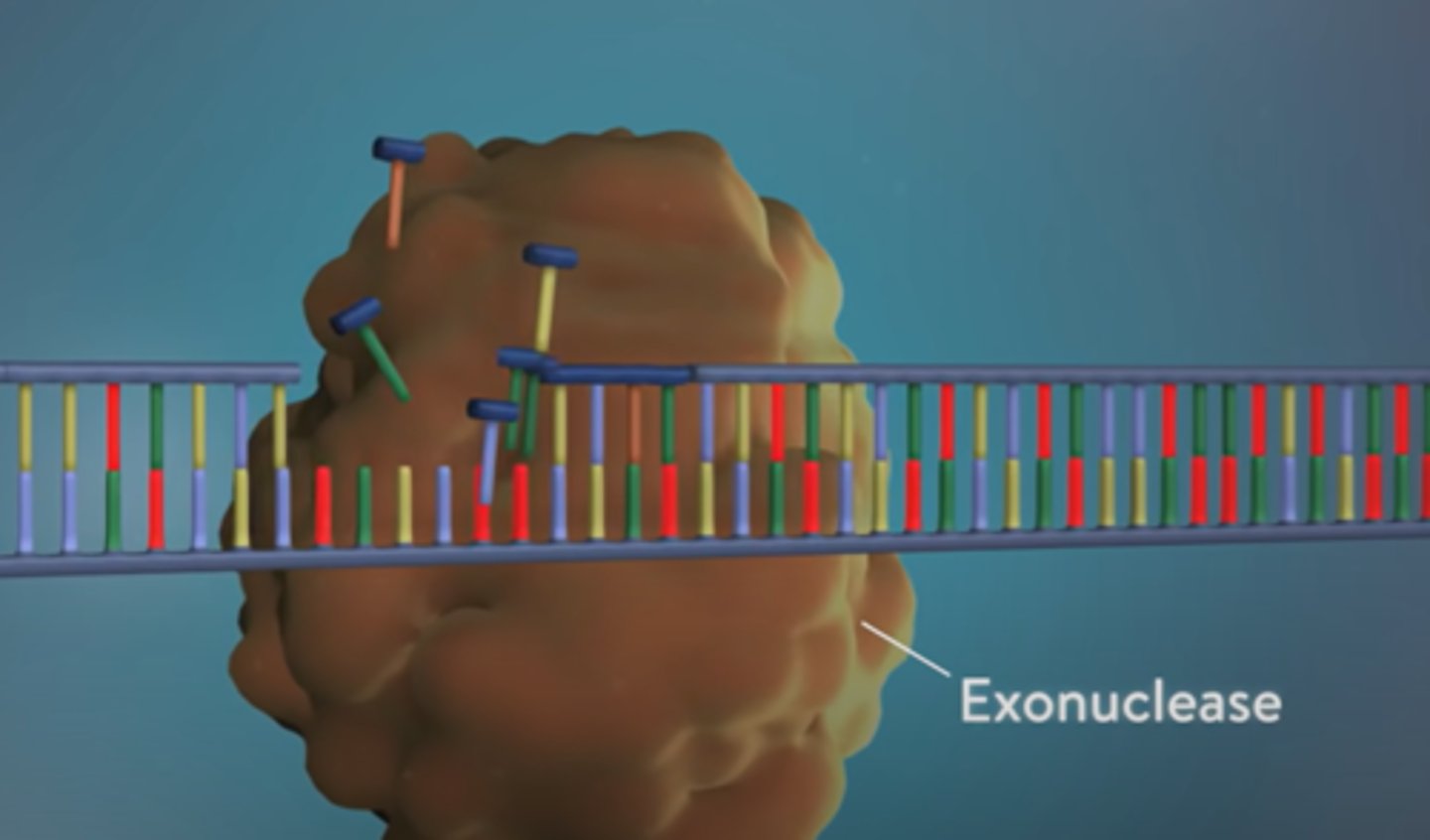
What is the final step of DNA replication?
Ligase joins all fragments together, completing the two continuous DNA strands.
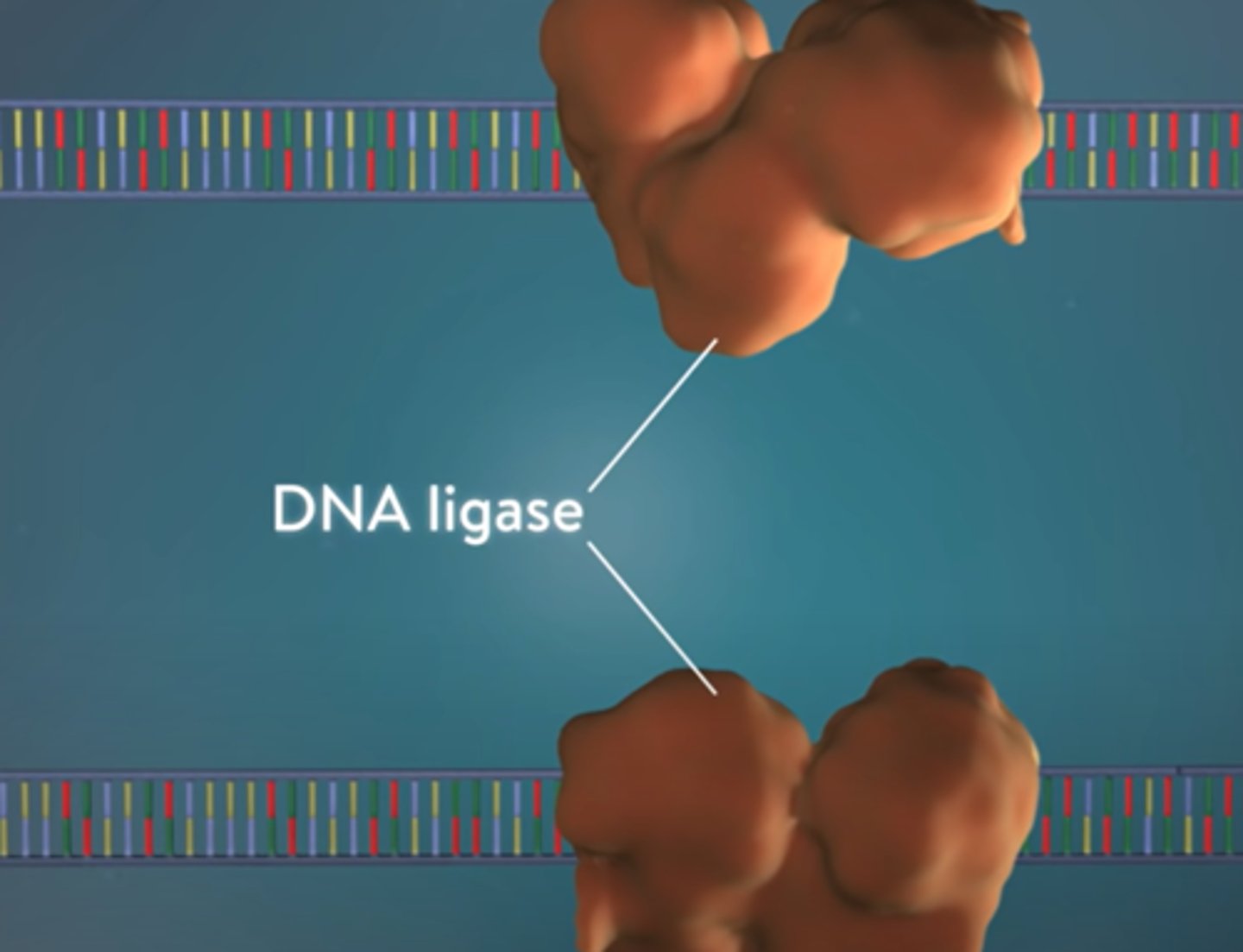
Why is DNA replication describes as semi-conservative?
One half of a new DNA is old, "conserved," and the other half is new.
this ensures that DNA never gets changed

What are the three different types of RNA
1. rRNA: ribosomal RNA - makes up ribosomes
2. tRNA: transfer RNA - transports amino acids to the ribosome
3. mRNA: messenger RNA - sends messages from the nucleus to ribosome
What is the goal of transcription?
To make mRNA from DNA
What is the first step of transcription
Initiation:
When a gene is switched on, RNA polymerase binds to a region called the promoter, which is the spot on DNA that tells RNA polymerase where transcription should start.
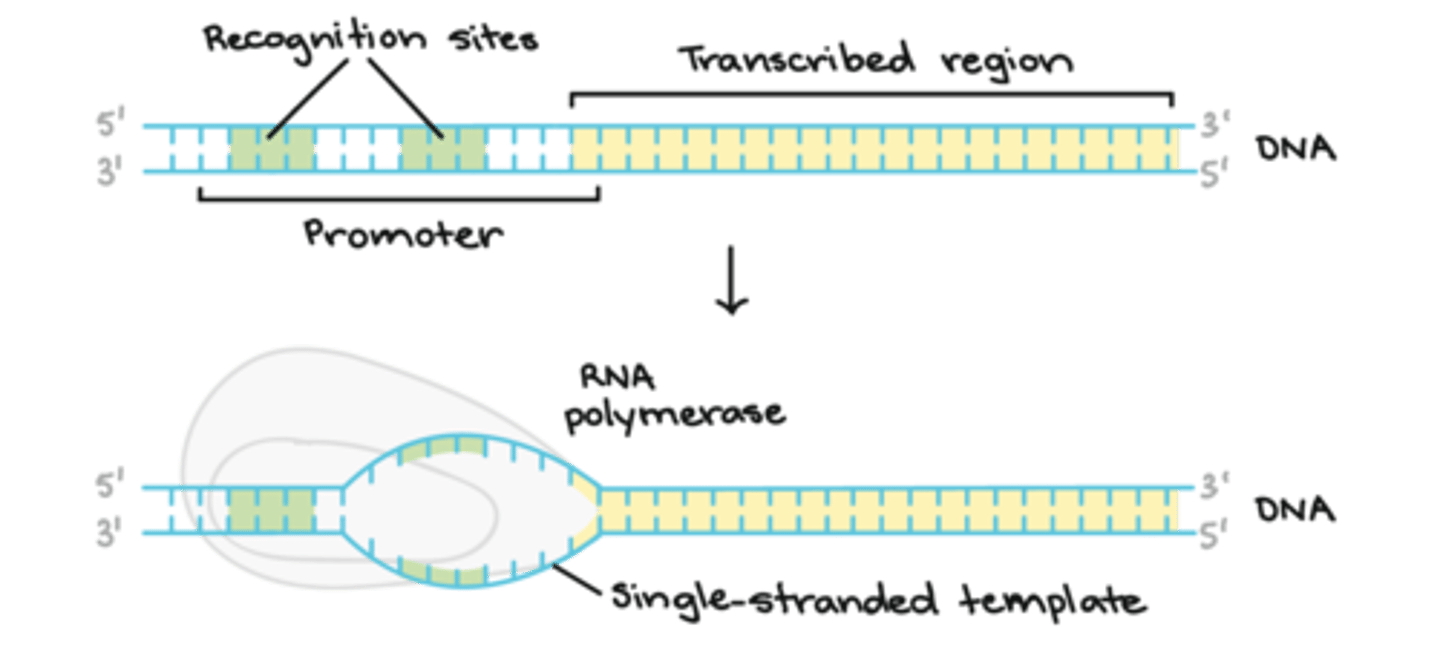
What is the second step of transcription?
Elongation:
1. RNA polymerase begins placing RNA bases on the one strand in the 5' to 3' direction, creating a copy of the other DNA strand (with uracil instead of thymine).
2. The strand that the RNA bases are being placed on is called the template strand because that is what is being built from. The other strand is called the coding strand because that is the strand that is being built, or "coded for"
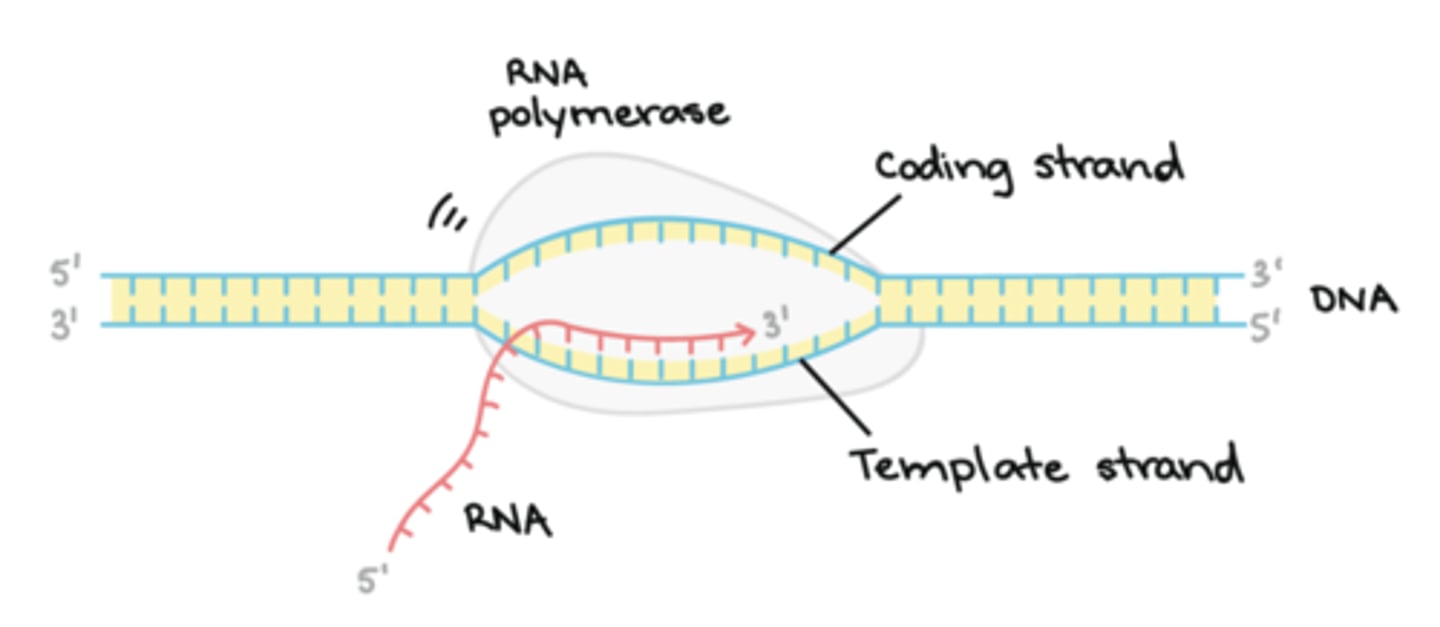
What is the third and final step of transcription?
Termination:
The mRNA will make a hairpin and push RNA polymerase off.
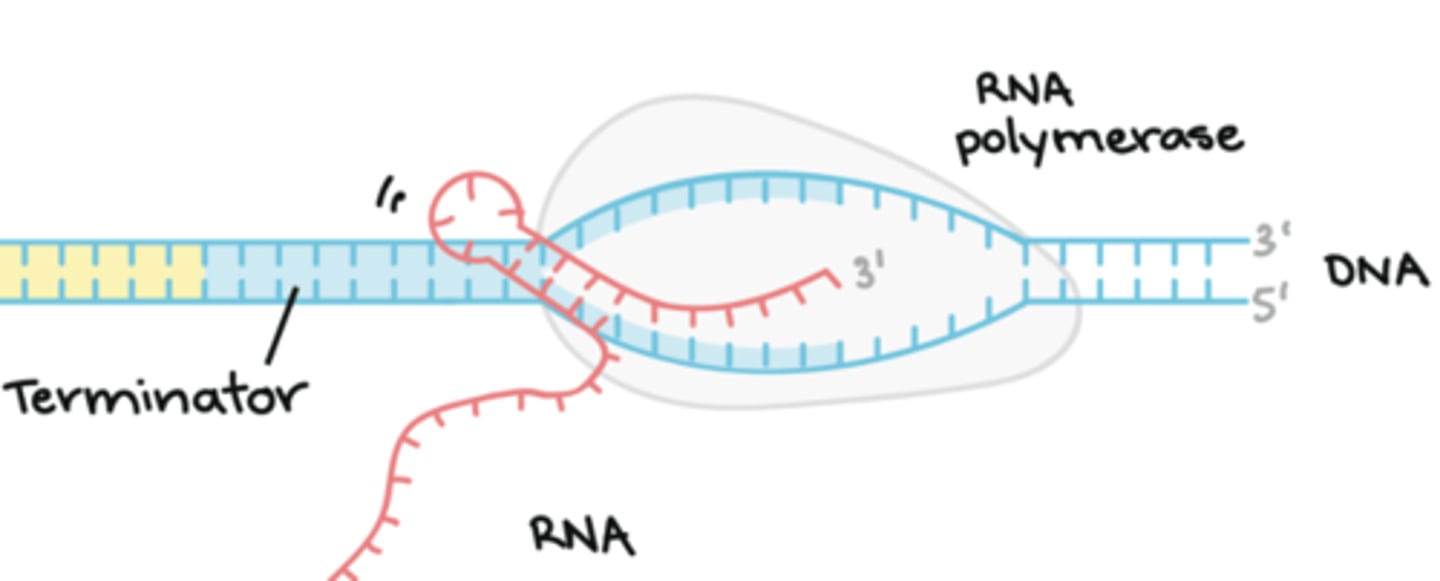
What has to happen before the new mRNA is sent to the ribosome?
Enzyme regulated modifications:
1. A GTP cap is added, doesn't matter why
2. A poly-a tail is added to protect the mRNA from exonuclease enzymes
3. Splicing: the introns (bad parts) are removed from the mRNA and the exons (good parts) stay. Spliceosomes do this.

What is the goal of translation?
to make proteins from mRNA
What is different about prokaryotes and eukaryotes regarding transcription and translation
1. Prokaryotes can do transcription and translation at the same time. This is because they have no nucleus, so the mRNA can feed right into the ribosome
2. In eukaryotes, transcription happens in the nucleus then the mRNA gets sent to the ribosome for translation.
What happens at the very start of translation?
The mRNA arrives at the ribosome, which binds to the mRNA.
The beginning of mRNA will always have the bases AUG because that is the start codon
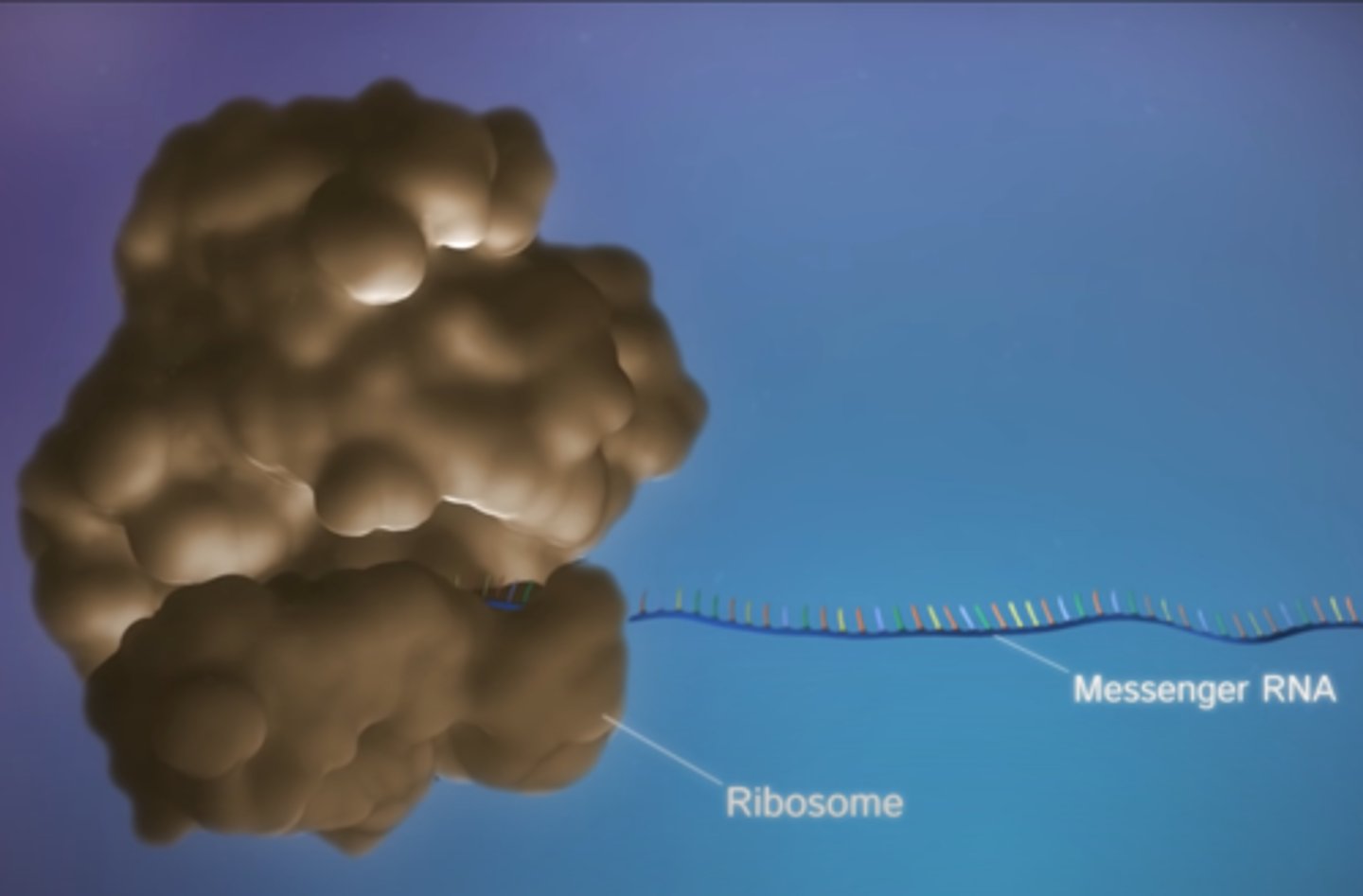
What is the second step of translation?
1. The mRNA is read three bases at a time in groups called codons, which code for a specific amino acid.
(ex: UGU codes for cysteine)
2. tRNA brings different amino acids depending on the codon it fits with, creating an amino acid sequence (primary structure of protein)
3. These amino acids are joined together through dehydration synthesis (remember from unit 1?)
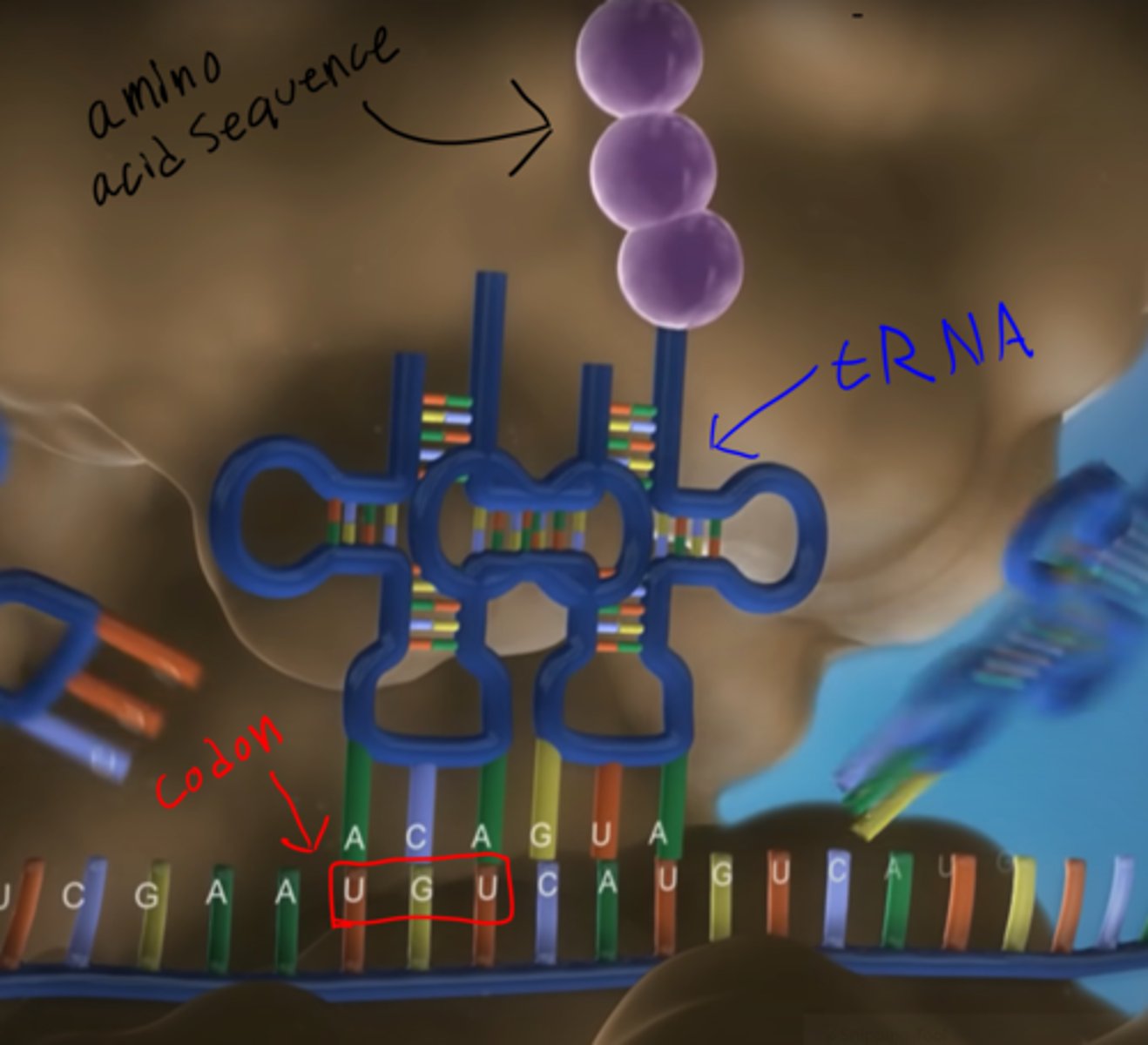
What stops translation?
The codon at the end of the mRNA will always be the "STOP" codon. Which can either be UAA, UAG, or UGA.
This signals that translation is over
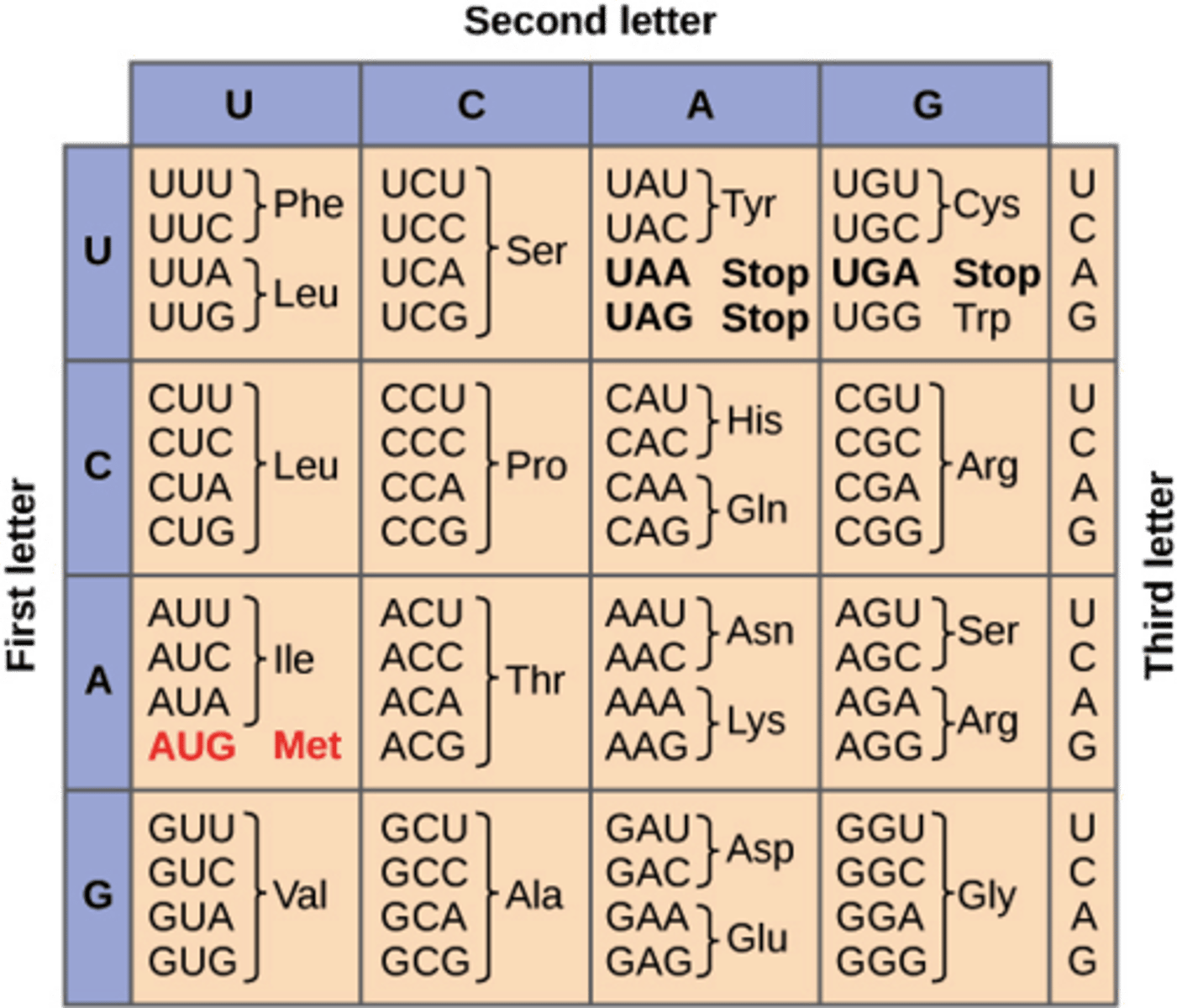
What happens after translation?
The amino acid sequence is taken to the rough endoplasmic reticulum where it is folded into a protein.
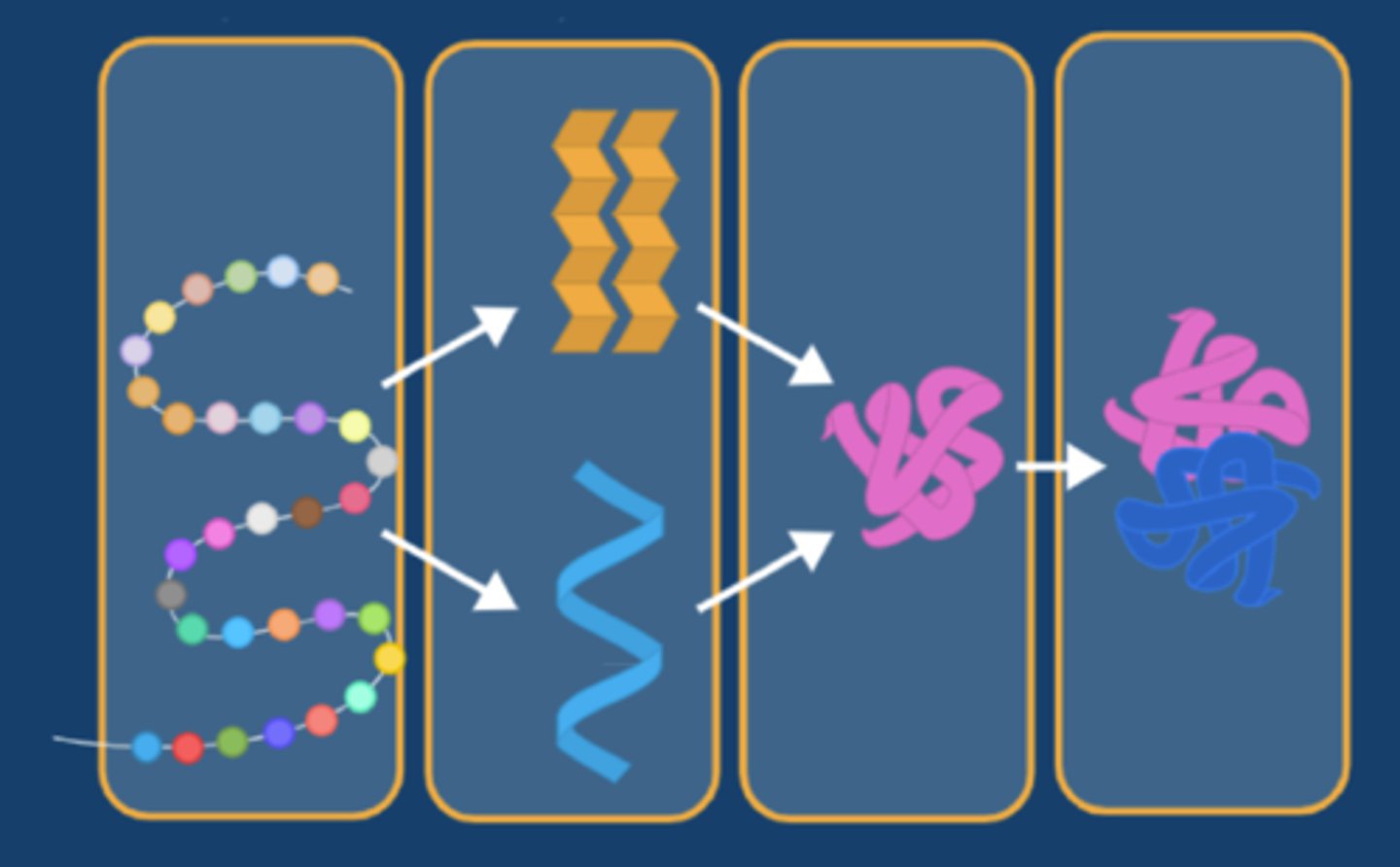
How do transcription and translation have to do with what different parts of the body are doing?
Genes that code for certain functions are only turned on in certain cells in your body.
For example: you have a gene that codes for alcohol dehydrogenase, which detoxifies alcohol. This gene will never be transcribed in your brain cells because you don't detoxify alcohol in your brain.
Likewise, the gene that codes for neurotransmitters will never be transcribed in your liver cells because you don't think with your liver. However these will be transcribed into mRNA in your brain cells because you DO think with your brain.
How do cells know what genes to turn on and off?
1. Transcription factors bind to DNA to regulate gene expression
2. Activators bind to the promoter to turn a gene on and prompt it to start transcription
3. Repressors bind to the silencer keep transcription from happening. Even if there is 50 activators, transcription will not happen if there is 1 repressor
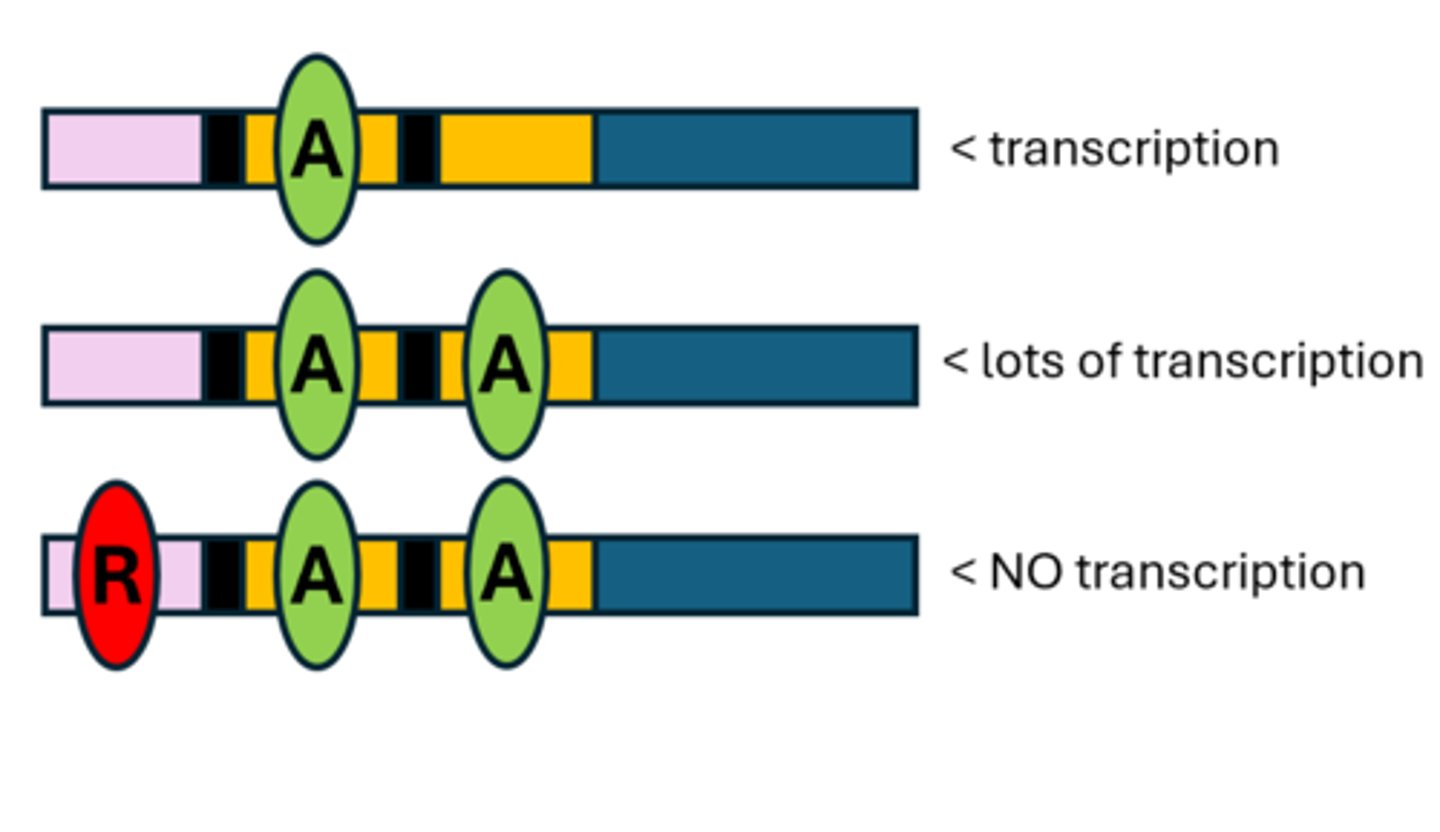
What can cause a gene to be activated?
1. Signals from outside the cell like ligands can signal the cell to create activators
2. signals from inside the cell like damage to DNA can cause activators to be made as well
3. The presence of certain molecules can prompt repressors to fall off the gene
What is a mutation?
A change in DNA sequence
This can happen from mistakes if DNA polymerase messes up or from radiation
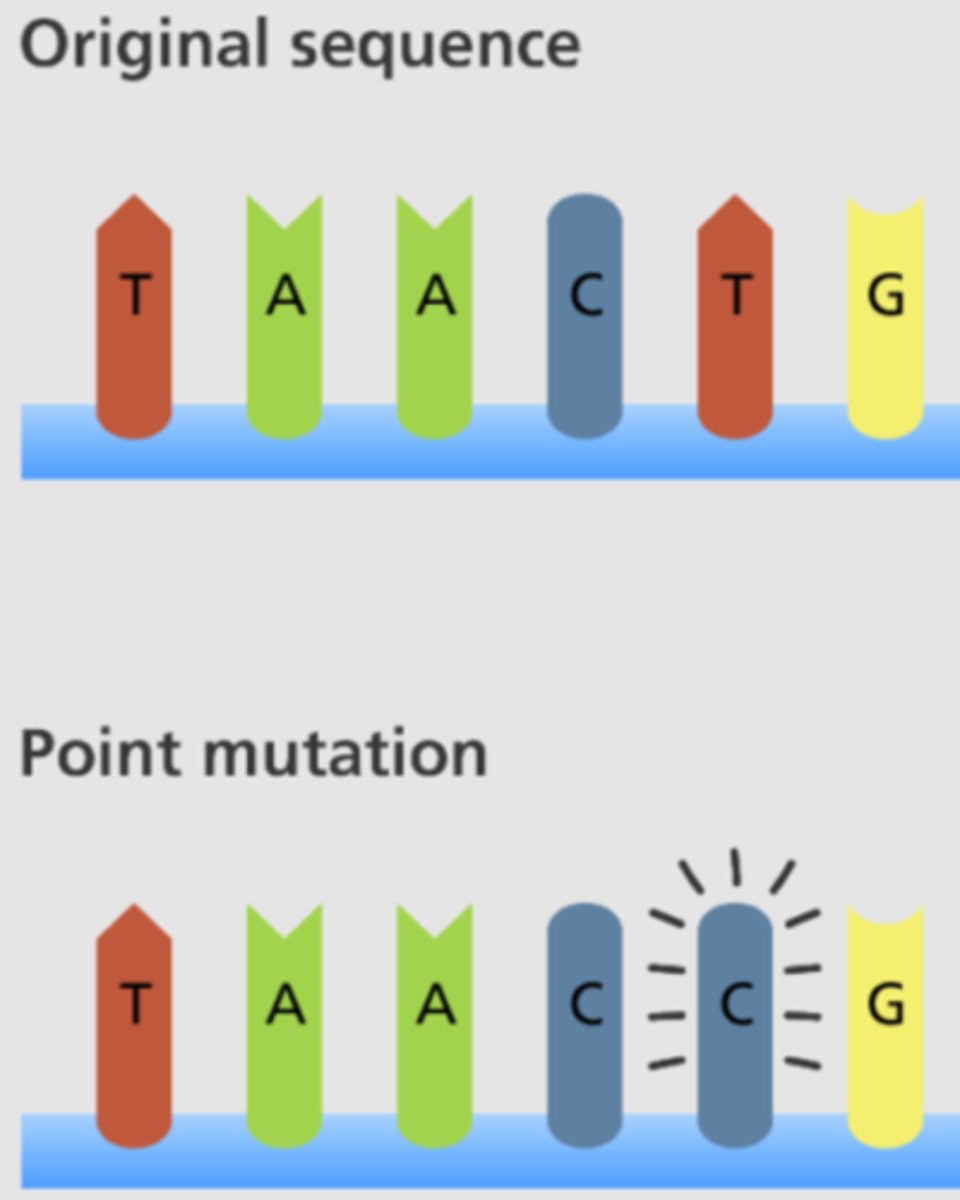
What are the three types of mutations?
1. Substitution: one base s exchanged for another
2. Deletion: One base is missing
3. Insertion: an extra base is added
How can mutations be positive, beneficial, and neutral?
1. A mutation can be positive if it helps a species survive like if it leads to a color that is better camouflage.
2. A mutation can be neutral if it doesn't change the amino acid it codes for.
So if CUU gets changed to CUC it will still code for leucine
3. A mutation can be negative if it leads to a disease or other issue
The environment can change if a mutation is positive or negative. For example a color mutation might be better camouflage in one environment but make the animal stand out in another environment.
Biotechnology is too complicated to explain on flash cards. Just watch the amoeba sisters video about it
https://youtu.be/t3g26p9Mh_k?si=p4jxKPsNSTqK4zQ9